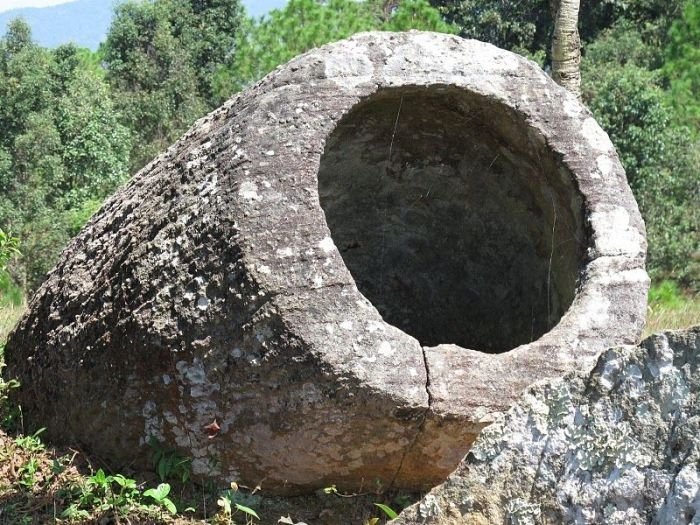|
|
The Plain Of Jars, Laos
|
No further archaeological research was conducted until November 1994 when Professor Eiji Nitta of the Kagoshima University in collaboration with Lao Archaeologist Thongsa Sayavongkhamdy surveyed and mapped Site 1. Nitta argues that the surrounding burial pits are contemporary to the stone jar as they are cut into the ancient surface on which the jar was placed. Nitta sees the stone jar as a symbolic monument to mark the surrounding burials.
He dates the Plain of Jars to the late first – early second millennium C.E. based on the burial urn and associated grave goods. Sayavongkhamdy undertook survey and excavation between 1994 and 1996 supported by the Australian National University. Sayavongkhamdy and Bellwood interpret the stone jars as a central single person's primary or secondary burial surrounded by secondary burials of family members. Archaeological data collected during UXO clearance operations supervised by UNESCO archaeologist Julie Van Den Bergh at the in 2004-2005 and again in 2007 provided similar archaeological material results. Van Den Bergh recorded similar to Nitta stratigraphical evidence that the stone jars and surrounding burials are contemporary .
The differing burial practices of cremation inside and secondary inhumation surrounding the jar, as noted by Colani can not easily be explained, in particular as the cremated remains were identified mainly belonging to adolescents and the associated materials do not appear to differ greatly from the surrounding burials. While the UXO clearance operations did not include emptying of jars and thus no additional evidence could be gathered, Van Den Bergh proposes that the stone jars initially may have been used to distil the dead bodies and that the cremated remains within the stone jars represent the latest phase in Plain of Jars. The stone jars with smaller aperture may reflect the diminishing need to place an entire body inside.
The suggestion that stone jars in a similar fashion as traditional Southeast Asian Royal mortuary practices functioned as 'distilling vessels' was put forward by R. Engelhardt and P. Rogers in 2001. In contemporary funerary practices connected to Thai, Cambodian and Laotian royalty the corpse of the deceased during the early stages of the funeral rites is placed into an urn, while the deceased is undergoing gradual transformation from the earthly to the spiritual world. The ritual decomposition is followed by cremation and secondary burial.
|
|









